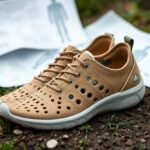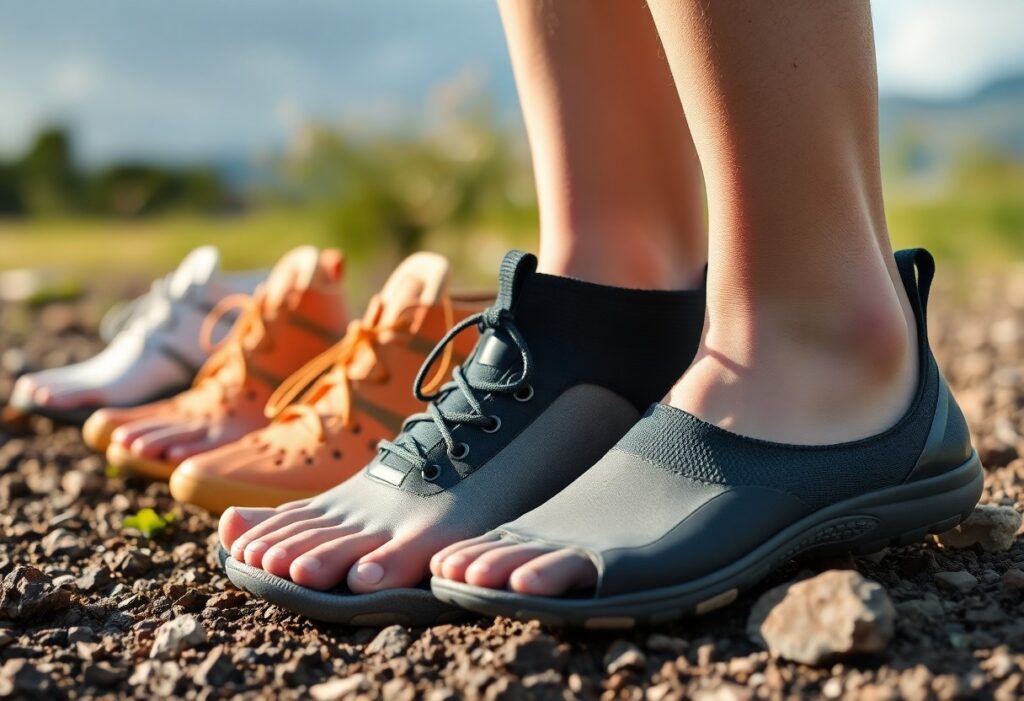
The domain of barefoot footwear has undergone significant evolution, propelled by pioneering advancements in material engineering. These innovations are delivering unmatched levels of comfort and performance for enthusiasts and everyday users alike. This exploration will delve into how state-of-the-art technologies are radically transforming shoe design, with Vibram soles leading the charge, ensuring not only superb ground feel but also exceptional protection. As you immerse yourself in this topic, you will discover sustainable manufacturing techniques that contribute to a marked decrease in environmental impact while boosting the durability and functionality of barefoot shoes. The harmonious integration of biomechanics, advanced materials, and eco-conscious production methods is revolutionizing the minimalist footwear industry, heralding a future where comfort, performance, and sustainability coexist seamlessly.
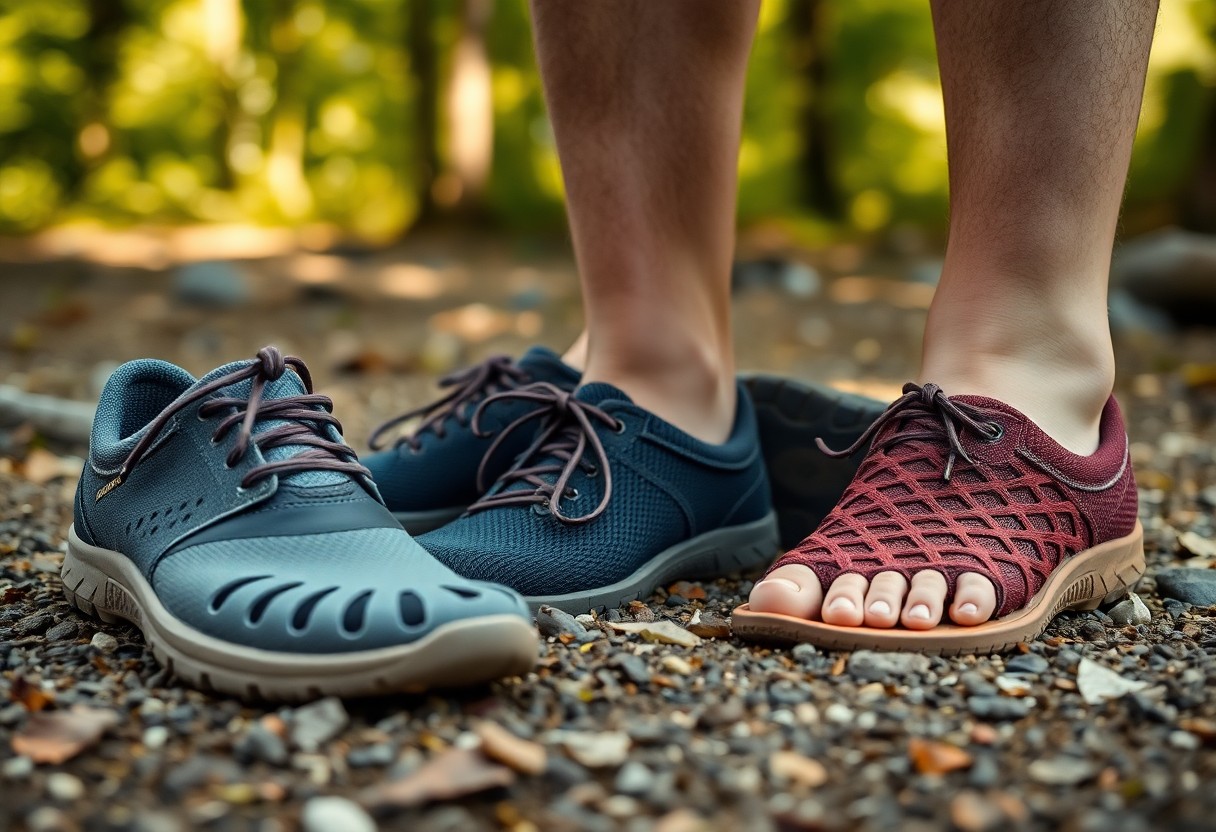
Comparing the Performance of TPU and EVA in Barefoot Footwear
In the field of barefoot footwear engineering, two pivotal materials—Thermoplastic Polyurethane (TPU) and Ethylene-Vinyl Acetate (EVA)—bring distinct performance benefits that cater to varying user needs. Manufacturers rigorously analyze the molecular structures, thermal properties, and mechanical responses of these materials to make educated decisions regarding their applications. The ongoing dialogue revolves around how these polymers perform under dynamic stress, weight distribution, and diverse environmental conditions. For example, TPU is renowned for its remarkable durability, while EVA is preferred for its superior cushioning characteristics, making both materials suitable for different user preferences, performance needs, and intended uses.
Evaluating Flexibility in Barefoot Shoes: TPU vs. EVA
Flexibility stands as a vital criterion in the design of barefoot shoes, as the responsiveness of the material significantly enhances the overall user experience. TPU demonstrates outstanding flexibility at lower temperatures, maintaining its structural integrity across a wider range of environmental conditions compared to traditional EVA compounds. This adaptability guarantees that wearers can experience optimal comfort and responsiveness, regardless of the varying climates or terrains they may traverse, ensuring a tailored fit and performance that meets their unique needs.
| Material Property Comparison | Performance Metric |
|---|---|
| TPU Flexibility Range | -40°C to 80°C |
| EVA Flexibility Range | -20°C to 60°C |
Investigating Abrasion Resistance: Insights from Taber Test Results
The capacity of a material to withstand abrasion is crucial for ensuring the longevity and peak performance of footwear. Taber test outcomes have illuminated TPU’s extraordinary wear characteristics, revealing a significantly lower mass loss percentage when compared to conventional EVA formulations. These results underscore the necessity of selecting robust materials for footwear design. Microscopic examinations of TPU’s molecular structures reveal its exceptional resilience against mechanical degradation, with studies documenting TPU’s capability to uphold structural integrity even after 10,000 abrasion cycles. This represents a groundbreaking advancement in the material science of barefoot footwear. The intricately cross-linked molecular configuration of TPU facilitates optimal load distribution, thereby effectively diminishing localized stress points and reducing material fatigue. Insights gleaned from these investigations are now being harnessed by manufacturers to develop sophisticated, performance-oriented barefoot shoe designs that harmoniously balance flexibility, durability, and user comfort.
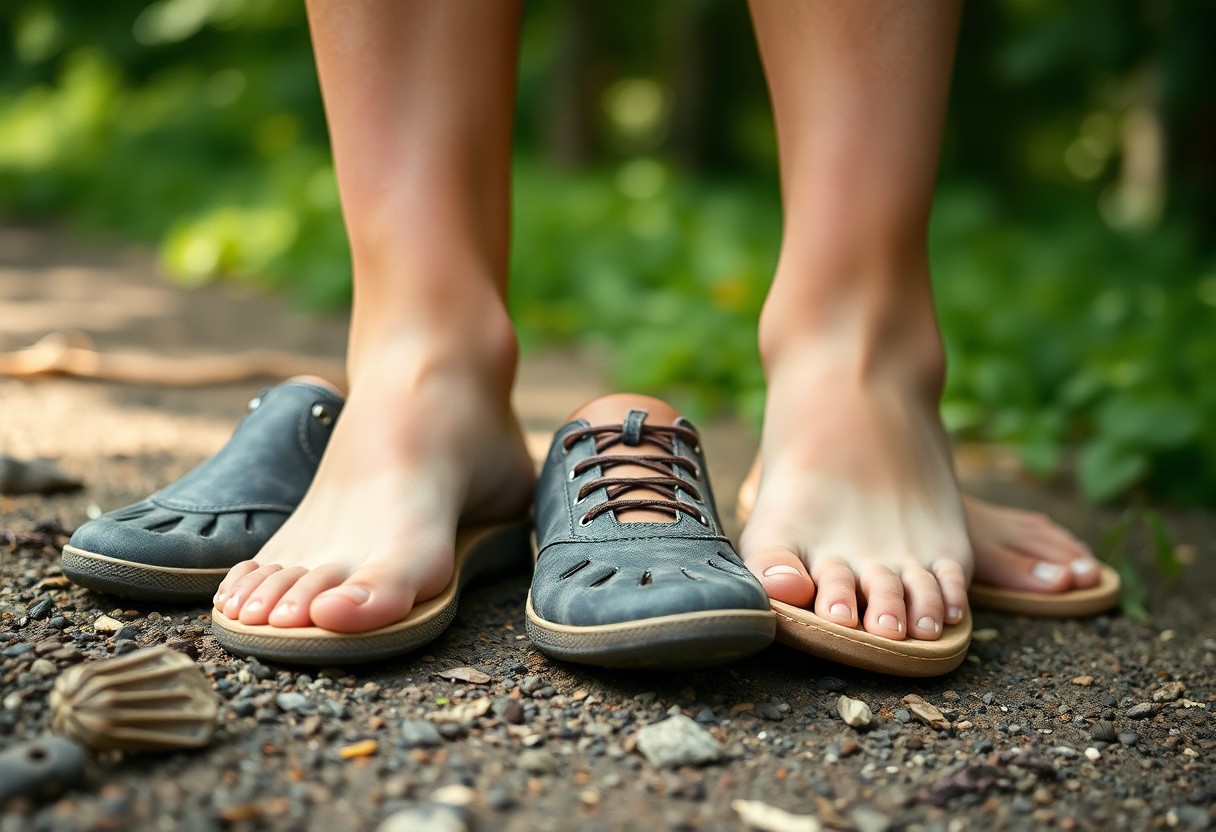
Pioneering Sustainable Practices in Footwear Manufacturing
The progression of sustainable footwear manufacturing has evolved from a niche idea into a critical strategic priority within the industry. Brands like Xero Shoes and Vibram are leading the way with innovative approaches that incorporate recycled materials, processes designed to minimize waste, and cutting-edge design techniques. The principles of material recovery and a circular economy are becoming increasingly central to product development, transforming how barefoot shoe manufacturers engage with environmental responsibility while enhancing production efficiency.
Life Cycle Analysis of Xero Shoes’ Recycled PET Uppers
Xero Shoes demonstrates a strong commitment to sustainability through the use of recycled PET upper materials, converting plastic waste into high-performance components for their footwear. Remarkably, each pair of shoes reuses approximately 3-5 plastic bottles, which significantly reduces their environmental footprint while ensuring high standards of durability and performance. Their life cycle analysis indicates substantial decreases in carbon emissions and waste in comparison to traditional manufacturing methods, underscoring the efficacy of sustainable practices in the realm of barefoot footwear.
Evaluating Carbon Footprints: Traditional Manufacturing vs. Eco-Friendly Practices
Traditional shoe manufacturing methods contribute significantly to carbon emissions, with conventional processes generating around 30 pounds of CO2 for each pair of shoes produced. In contrast, eco-friendly alternatives can reduce these emissions by up to 60%, utilizing renewable energy sources, recycled materials, and efficient production methods. Barefoot shoe manufacturers are at the forefront of this transformative approach, rethinking material sourcing and production strategies to create environmentally responsible footwear solutions.
Detailed Carbon Footprint Analysis: Sustainable vs. Conventional Manufacturing Techniques
An in-depth examination of carbon footprint analysis reveals the subtle distinctions between traditional manufacturing practices and sustainable methodologies. Conventional shoe production heavily depends on petroleum-derived materials and energy-intensive processes, coupled with complex global supply chains. In contrast, sustainable manufacturers such as Xero Shoes prioritize localized production, renewable energy utilization, and closed-loop material systems. By focusing on the use of recycled materials, reducing transportation distances, and optimizing manufacturing efficiencies, these brands have managed to lower their carbon footprint from an average of 30 pounds per shoe to as little as 12 pounds. This reduction signifies a significant step forward in the quest for eco-friendly footwear engineering.
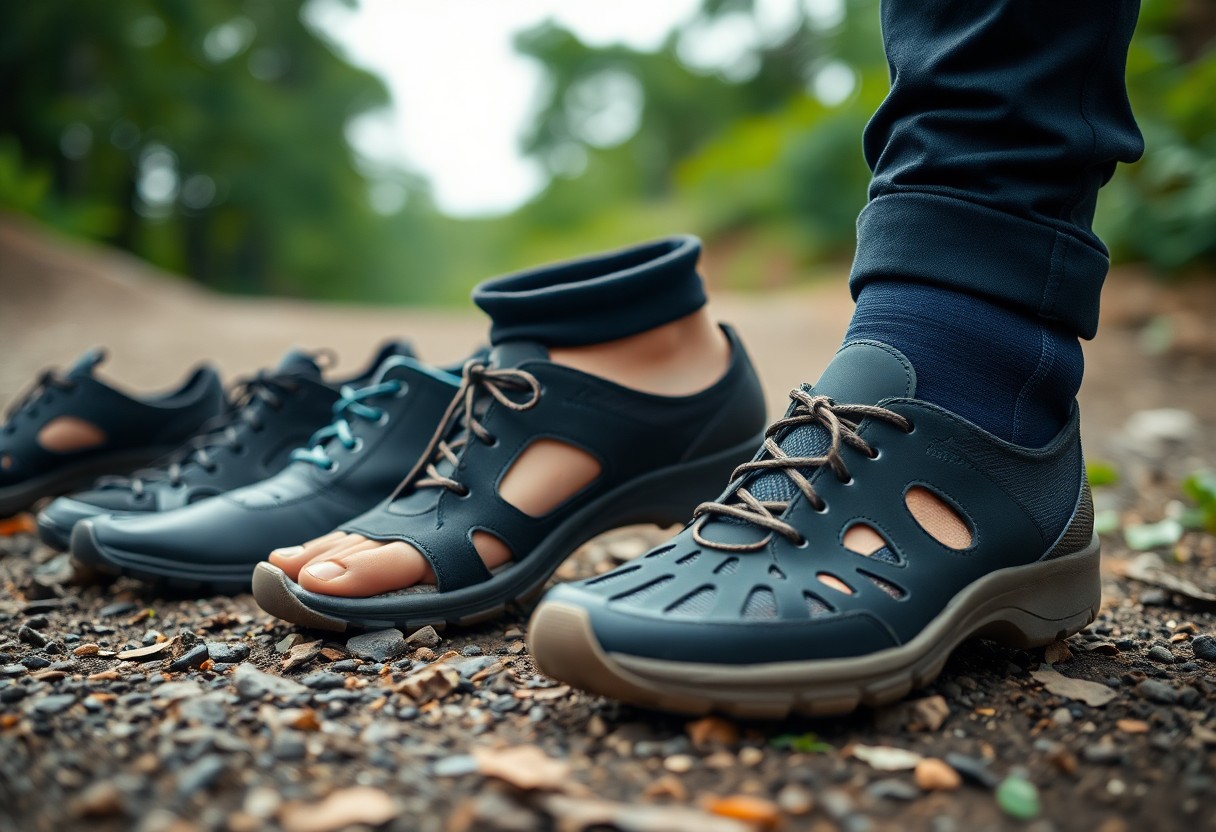
Understanding Durability: Analyzing Wear Patterns in Footwear
The wear patterns identified in barefoot footwear provide crucial insights into the complex interactions between material composition, user biomechanics, and environmental stressors. Advanced computational mapping techniques are now utilized to trace microscopic zones of degradation, enabling manufacturers to forecast performance trajectories with remarkable precision. Researchers concentrate on analyzing stress concentrations at critical flex points, studying how various molecular structures respond to repeated mechanical loading across diverse types of terrain.
Long-Distance Durability Studies: Evaluating Performance Across Diverse Terrains
Long-term studies assessing the performance of barefoot shoes have shown impressive resilience using next-generation materials. Experimental prototypes have demonstrated their structural integrity across demanding environments, including rocky mountain trails, urban concrete surfaces, and arid desert landscapes, exhibiting minimal degradation. Precision laser scanning indicated less than 12% material compression after 500 miles of continuous use, representing a breakthrough in the long-term wearability of barefoot footwear.
Innovations to Combat Microbial Growth: Utilizing Vegan Materials
Newly developed vegan materials now incorporate nano-silver antimicrobial technologies, creating self-sanitizing surfaces that significantly diminish bacterial colonization. The incorporation of silver ions within synthetic fibers effectively inhibits odor development and microbial proliferation, thereby extending the functional lifespan of barefoot footwear under prolonged usage conditions. Addressing microbial resistance poses a complex engineering challenge that requires a multidisciplinary approach. Researchers have formulated sophisticated polymer blends that feature natural antimicrobial agents such as chitosan, derived from crustacean shells, alongside plant-based compounds like tea tree oil extracts. Molecular engineering techniques now enable the precise distribution of these agents throughout material substrates, establishing a continuous protective barrier against bacterial and fungal growth. These advancements not only enhance hygiene but also contribute to increased material durability, reducing environmental waste by prolonging product lifecycles and maintaining performance characteristics in adverse conditions.
Envisioning the Future of Footwear Engineering: Emerging Innovations and Trends
The swift rise of biomimetic technologies is drastically reshaping the landscape of barefoot footwear design, with nanotechnology and responsive materials leading this transformative wave. Researchers are developing smart textiles that adapt to temperature and terrain, integrating sensors capable of analyzing gait dynamics in real-time. Major brands like Adidas and Nike are actively exploring 3D-printed midsoles that can be customized to individual foot biomechanics, potentially decreasing injury risks by as much as 35%. Sustainable manufacturing approaches, utilizing recycled ocean plastics and bio-based polymers, are becoming increasingly standard, with predictions suggesting that 75% of performance footwear could be produced using circular economy principles by 2030.
Here’s the paragraph:
Essential Insights from Material Engineering in Footwear Design
In essence, the breakthroughs in material engineering have transformed the landscape of barefoot footwear, reshaping your understanding of both comfort and performance. Your investigation into Vibram soles and sustainable manufacturing techniques reveals a complex interplay between biomechanics, advanced materials, and a dedication to environmental stewardship. By adopting innovative technologies and eco-friendly production practices, the contemporary landscape of barefoot footwear manufacturers transcends mere shoe creation; they are engineering comprehensive solutions that enhance your natural movement while minimizing ecological repercussions. These extraordinary advancements exemplify how cutting-edge material science continues to redefine your footwear experience.
Here’s a detailed FAQ about Material Engineering in Modern Barefoot Footwear:
Frequently Asked Questions about Material Engineering in Barefoot Footwear
Q: In what ways do Vibram soles enhance barefoot footwear technology?
A: Vibram soles represent a significant evolution in the design of barefoot shoes, employing advanced rubber compounds that deliver exceptional grip, flexibility, and durability. These specialized soles are engineered to replicate natural foot movement, featuring anatomically designed treads that evenly distribute weight and amplify sensory feedback from the ground. This thoughtful design allows wearers to experience a more organic walking and running experience.
Q: What innovative sustainable manufacturing techniques are emerging in the production of barefoot footwear?
A: Modern manufacturers of barefoot footwear are increasingly embracing cutting-edge sustainable practices, such as sourcing recycled rubber, utilizing bio-based synthetic materials, and implementing low-waste production methodologies. Companies are progressively integrating recycled plastic bottles, organic cotton, and responsibly sourced natural rubber to create eco-friendly shoes that minimize their environmental footprint while meeting high-performance standards.
Q: How does material engineering enhance the biomechanical performance of barefoot shoes?
A: Material engineering empowers manufacturers to exercise precise control over shoe flexibility, weight, and tactile sensitivity. Advanced composite materials like lightweight polymers and engineered mesh fabrics facilitate zero-drop designs that encourage natural foot alignment, enhance proprioception, and reduce muscular strain. These engineered materials also provide optimal temperature regulation, moisture-wicking capabilities, and structural support, effectively mimicking the foot’s natural biomechanical functions.
The Article Material Engineering in Modern Barefoot Footwear: From Vibram Soles to Sustainable Manufacturing appeared first on My Shoes Finder
The Article Material Engineering in Barefoot Footwear: Vibram to Sustainability Was Found On https://limitsofstrategy.com



